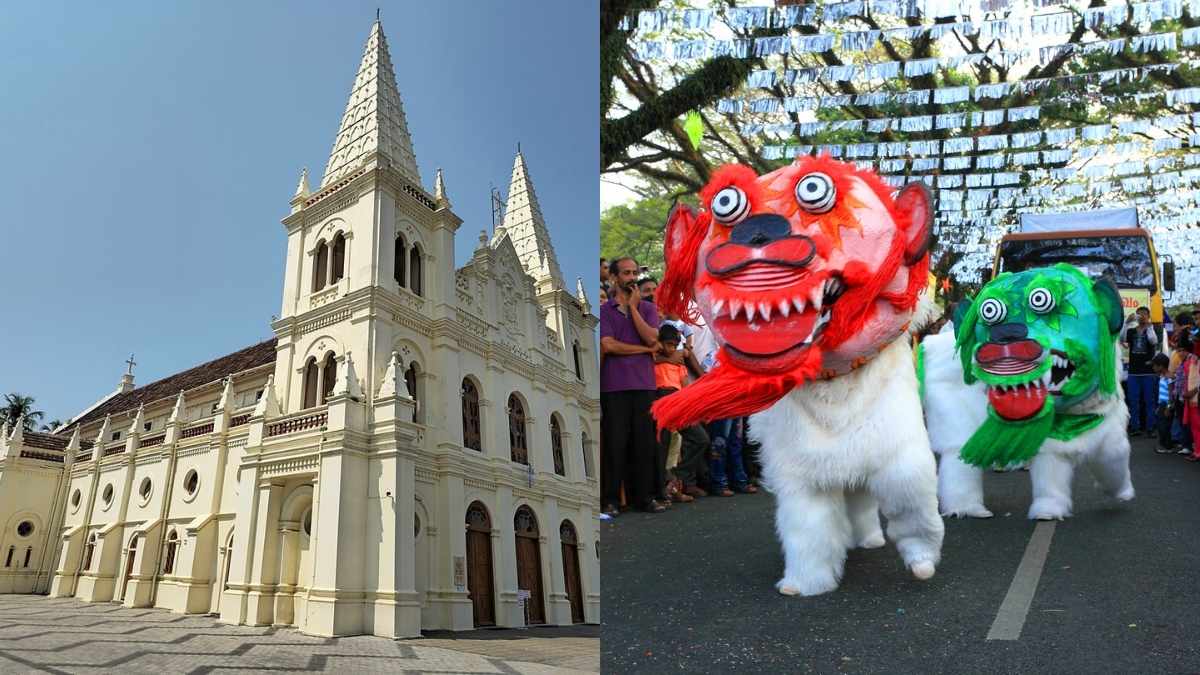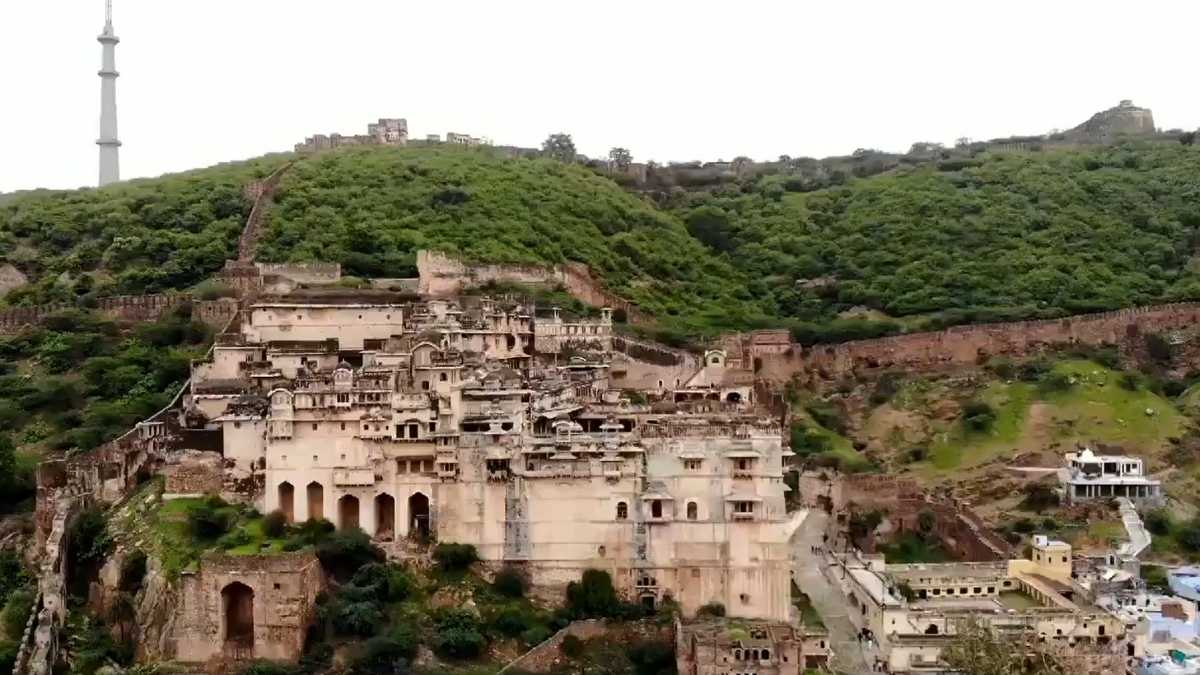Churches, museums, cobbled streets, delish food, chic bars, promenades and lots of history, Budapest is the quintessential European country. Separated by Danube and connected by bridges, Buda and Pest are two cities in one! Here are 10 reasons why you should be putting this Hungarian city on your to-do list!
1. The Stillness Of The Danube
Europe’s second largest river, Danube runs across four countries and through its course, blesses Budapest separating the hilly side of Buda and the flatter Pest. It serves as a vantage point to view every historic building in Budapest. You can get a glimpse of these iconic sites, some of which are UNESCO World Heritage Sites with a river cruise on the Danube or you can walk along the promenade. The Danube promenade stretches from Chain Bridge to Elizabeth Bridge on the banks of the river and is a bustling spot with many cafes and hotels.
Shoes on the Danube: The most interesting thing on the promenade are the Shoes on the Danube. This memorial has a chilling history attached to it. Conceived by Can Togay, the Pest side of Danube stores a haunting story of the 3,500 people (800 Jews) that were made to remove their shoes and shot on the banks of the river during WWII. These 60 pairs of shoes constructed from iron attached to the embankment are a remembrance of the horrors of the war.
2. One of the oldest and the largest Parliament Buildings!
The Hungarian Parliament building is the third largest in the World and is also a 100 years old. The limestone building is an architectural marvel with a Neo-Gothic style. With 619 rooms, 20km of stairs and a dome of the Renaissance style, this one is a must see. However, the parliament is best viewed from the other side of the river.
Budapest’s past traces from the Renaissance to the World War. With so many monuments and important buildings to visit, the art and history buff in you will be delighted! Starting with city’s crowning jewel is the Castle Hill.A UNESCO World Heritage Site, this spot towering over Danube contains impressive structures that hold pretty much everything the country has seen till date. Buda Castle is the formal Royal Palace built in the 13th Century and has been rebuilt several times! Today, it crests over the city standing amidst Buda Hills and also houses the Hungarian National Gallery and the Castle Museum. And the best way to reach here is through the Hungarian Funicular! The St Stephen Basilica is another wonder, where time has frozen in its neoclassical exteriors. Besides giving an eerie old world charm, it also stores the mummified right hand of St Stephen in its main attraction – Holy Right Chapel. History or no history, the cathedral’s dome is another vantage point from where Budapest can be seen at its best! The Great Synagogue is the largest in Europe and second largest in the World. It was built in 1859 can house about 3000 people! The complex also houses the Heroes’ Temple, Jewish cemetery and the Holocaust Memorial Park.
Hungary has been inflicted with horrors of wars and the House of Terror is one place where you can get a look into what went during the WWII. House of Terror was earlier the headquarters of the dreaded Hungarian Nazi Party and the Soviet Ruling AVH and now displays photographs and videos of the awful times of the regime. The most terrifying of everything in the museum is the underground prison system that exhibits prison cells and torture chambers where many died. The Memento Park is another reminder of Hungary’s dark days under the Communist era. This park contains somewhat banished statues that were erected to honor these leaders over the years. After the downfall, the city government decided to put them away on the outskirts of the city. The park does not honor the leaders, nor does it make a mockery, it stands as a reminder of the uprising!
5. Dip in thermal baths!
Few may know, but Budapest is also titled as the City of Spas. It’s a rather odd accolade, but once you’re in the city, you’ll see open-air plunge pools, art nouveau indoor baths, spas for all kinds of stresses and gigantic Turkish baths. The city stands atop more than 100 hot water springs that are rich in minerals and are known to cure a range of illness. Imagine a temperature of 2 degree Celsius outside, whereas you are rejuvenating in a thermal sprig at 35 degrees! First the Romans, then the Turks and now the world gets to dip in these thermal baths. Out of the many establishments, the Szechenyi Baths have 15 thermals baths and while you’re there you can play chess inside one of its 3 outdoor pools! The Gellert Baths are famous for their art deco style and has a spectacular indoor swimming pool. The Rudas Baths is a Turkish bath complex that was built under the Ottoman Rule during the 16th Century. It has a rooftop pool overlooking the Danube.Each bath has its own advantage from the treatments they offer to the facilities for men, women and children at different times. Depending on your area of ‘stress’, pick a bath that suits you best! But, if you have a little more time in this city, try more than one bath for variety.
6. Beautiful above and under
If you’re all about the views, then the Fisherman’s Bastion is the place to tick off. This neo-Gothic terrace with its seven towers representing the Magyar Tribes sits on the Buda side giving you panoramic views of the Danube, Margaret Island, Pest and Gellert Hill. An excellent viewing spot, Fisherman’s Bastion is where you can capture the best sunset! Talking about, beautiful above, Budapest is also spectacular down under. Yes, along with being a City of Spas, it is also a City of Caves. Who would believe that under the medieval marvels lies a magnificent system of caves? The Buda Castle Labyrinth is one such underground system where history lurks, and so does the ghost of Dracula (legend is, he was once imprisoned here). Tunnels, secret chambers, oil lanterns – the caves under the Buda Castle are all about the spooky! If you’re looking for more adventure and less haunted, the Pálvölgyi Caves tucked in District II are open to public for caving. The Pálvölgy Cave and Mátyáshegyi Caves are connected via a 30km long network making it the second largest in Hungary. Get ready to explore the underground with poking stalactites and stalagmites.
7. Yummy In the Tummy
Want to gorge up the best of Hungarian cuisine? Then goulash, a soup of meat and vegetables spiced with some paprika, pörkölt which is a type of meat stew, and paprikash, a paprika chicken dish are a must try. You can also get indulgent with some dessert at the one of the oldest confectioneries in Budapest! Ruszwurm Café is one place that throws of old world charm in the most simplistic fashion. Pastel walls, a family run business, limited seating and a recipe book with secret deliciousness. One look and you’d be reminded of the Irani Cafes in Mumbai! The Szamos family bakes one of the most delish ‘creamy’ cakes, a classical Hungarian dessert. For great coffee, New York Café seems to be on everyone’s to-do list.
8. A walk down the classic European boulevard
Andrássy Avenue is a boulevard that boasts of neo-renaissance architecture, state of the art buildings, chic cafes and high end boutiques. But this avenue does more than housing 19th century structures; it connects the inner city parts to City Park, where the road is widened for residential villas to share gardens! The narrow, other side of the park, starting at St Basilica, intersects with Grand Boulevardd, giving the intersection a octagonal shape and hence, the name Oktogon. Another stand out on this boulevard is the State Opera House with the Opera Café known for its freshly brewed coffee standing right opposite. The lane is an architectural marvel! For those not interested in art and history, you can spend time and your money at the many designer boutiques on the lane.
9. Drink your nights away in abandoned buildings
It may sound strange and creepy to sit and sip on chilled beers in abandoned houses and stores, but Budapest has found a way to make it hip. District VII of the old Jewish Quarter in Budapest is where derelict buildings, worn off structures some from the WWII, deserted houses have turned themselves into artsy, funky places where people can gossip, drink , eat and chill. Budapest’s nightlife is bustling in these ‘Ruin Bars’, you can take a hint where it gets its name from. What was once ruined, has now transformed itself with flea market furniture, good alcohol, music and artists coming in and out. Some of these bars are not the most trendiest in terms of décor or service, but Hungarians have made them their place of comfort. Szimpla Kert was the first ever ruin pub that rose from the ashes of broken houses, Anker’t, Kuplung, ELLÁTÓ KERT are a few others!
10. There’s so much unusual!
How about leaving your mark in a pub? For Sale Pub, is a place where visitors leave notes, drawings, business cards, ads, pamphlets, covering the ceilings and the walls of the place. Contrary to its name, there’s nothing actually on sale, but you can dwell in the allure that so many people have visited the pub and left their mark here. Another unusual place is possibly the world’s largest hour-glass. Yes, in City Park you’ll find a gigantic time-wheel with glass grains passing from the upper to the lower wheel with accurate timing. There’s a church inside a cave at Gellert Hill, a hospital inside a nuclear bunker now turned museum and a library (Szabo Erwin Library) that would take you back to the 18th century with it chandeliers, wooden carvings, fireplace and vintage décor.
















